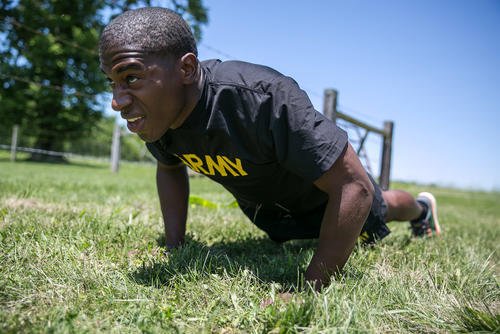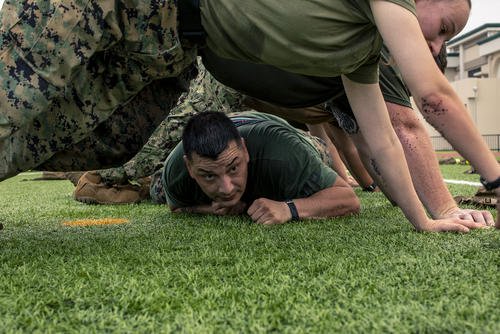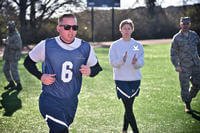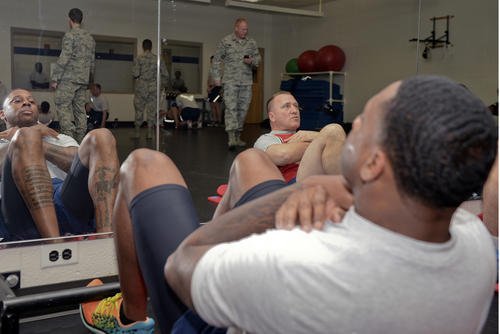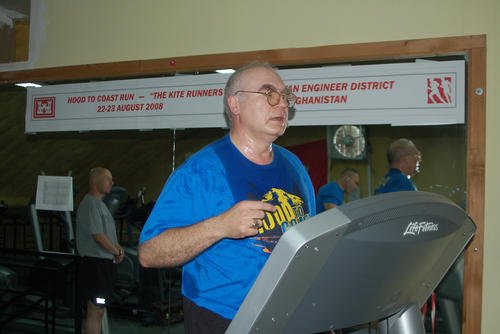Mastering push-ups and pull-ups requires progressing from building strength to developing muscular endurance. Conquering your first repetition of these calisthenics exercises is a matter of strength, but reaching high-volume sets, such as 20 pull-ups or 80 push-ups, becomes more about endurance and stamina.
Simply performing more reps is a logical start, but how you structure your training volume can mean the difference between breakthroughs and persistent plateaus. Below are five versatile workout options. Choose one or two to include three times a week, or rotate all five to vary the stimulus, boost volume and build core and grip strength.
1. The Classic Pyramid Workout
The pyramid method of training is a favorite among athletes and military trainers. Start with one rep, rest briefly, then perform two reps. Continue adding a rep each set until you reach your limit. Then descend the pyramid by reducing your reps by one each set. This structure builds strength, teaches pacing and develops overall endurance.
Read Next: How Much Weekly Running Is Advisable for Military Special Operations Training?
The pyramid is a progressive workout that also acts as an assessment each time you do it. The goal is to climb as high as you can up the pyramid, then repeat in reverse order. To master it, work up to Level 10 and back down to one, increasing each set until you fail.
The pyramid works like this:
- Set 1: 1 pull-up, 2 push-ups, 3 sit-ups (or hold the plank pose for 3 seconds)
- Set 2: 2 pull-ups, 4 push-ups, 6 sit-ups (or plank for 6 seconds)
- Set 3: 3 pull-ups, 6 push-ups, 9 sit-ups (or plank for 9 seconds)
Keep going to Set 10 (10 pull-ups, 20 push-ups and 30 sit-ups or hold the plank pose for 30 seconds) or until you fail, then repeat in reverse order. If completing every set, the total volume equals 100 pull-ups, 200 push-ups and 300 sit-ups (or five minutes of planks).
If you fail at any point, switch to easier variations such as assisted pull-ups, pulldowns or knee push-ups. But try to do as many pull-ups and push-ups as you can during each set before trying the easier option. This workout is excellent for gradually increasing total volume, with the descending sets helping reinforce good form as fatigue sets in.
2. Max Rep Sets with Timed Recovery

Practice submaximal sets throughout the day or during your workout, aiming to avoid failure but accumulating a high total volume. For example, perform sets at 50% to 70% of your maximum reps. Rest for a set period — such as once every hour throughout the day, or every minute in a gym setting.
- Example: If your max is 10 pull-ups, do five to seven reps per set several times daily.
- Benefits: Increases total volume per day, allows for recovery and will build strength and endurance.
- Best for: Practicing perfect form, improving rep consistency and building muscular endurance without burning out or failing.
3. Superset Training
Pair push-ups, pull-ups and some core activity, alternating sets with active rest. This creates a high-intensity session that taxes pushing and pulling muscles, as well as the core.
Here is a typical "superset" workout with active rest:
Repeat 5-10 times.
- Pull-ups 5
- Push-ups 15
- Plank or sit-ups for 30 seconds
- Jog or bike for 1 minute.
These are sub-max effort sets. Cut your max by 50% to 75% to establish your reps. For example, if you can do 10 pull-ups, try five reps per set. If you can do 40 push-ups, aim for 10-20 reps per set. Switch to assisted pull-ups, pulldowns, rows or knee push-ups when you fail. A stronger core is helpful when doing push-ups; many people struggle with this exercise because of an inability to maintain a straight back in the push-up position.
Supersets build work capacity, save time and keep the heart rate elevated for cardiovascular benefits.
4. Timed Set Intervals
Since most people need to improve on push-ups and pull-ups to excel on military fitness tests, they should focus on building up to a specific time limit and pace. Instead of counting reps, set a timer for the length of the test — or half that time — to train pacing and stamina. Alternate between push-ups and pull-ups, doing sets for 30 seconds, one minute or two minutes. This encourages pacing, mental toughness and endurance as you accumulate a large number of total reps.
For example:
Repeat three times.
- Pull-ups max
- Push-ups max in 1 minute
- Sit-ups or plank for 1 minute
- Rest with easy cardio for 5 minutes
Continue until the session ends, adjusting reps as needed to avoid failure.
Work on your pace for these exercises to find the reps per time that works for you to complete the timed limit of the test. Focus on maintaining good form.
Timed intervals are ideal for those seeking to build muscular endurance and stamina, because they push through mental barriers.
5. Weighted Variations and Negative Reps

If you're struggling with your first full pull-up or push-up, focus on building strength with variations such as pulldowns, knee push-ups or slow negatives with weight. Some tips:
- Add a weight vest for push-ups and pull-ups to overload muscles.
- Perform negative reps by slowly lowering yourself from the top position of a pull-up or push-up, fighting gravity for three to five seconds.
- Use resistance bands as needed to achieve a full range of motion.
- The bench press and pulldowns can be helpful to build strength with sets of four to six reps.
Weighted and negative reps recruit more muscle fibers and accelerate strength gains, helping bridge the gap between assisted and unassisted reps.
By integrating these five methods, you can target both the strength needed for your first rep and the endurance required for high-volume sets. Consistency, a steady progression and attention to form are your keys to breaking plateaus and reaching new personal bests.
I do not recommend doing daily pull-ups and push-ups for an extended period, as this typically leads to joint pain and negative results. Every other day is a better option, especially as you progressively increase volume each month.
Also, don’t neglect core and grip strength — planks, hanging knee raises and similar exercises directly support push-up and pull-up performance.
Want to Learn More About Military Life?
Whether you're thinking of joining the military, looking for fitness and basic training tips, or keeping up with military life and benefits, Military.com has you covered. Subscribe to Military.com to have military news, updates and resources delivered directly to your inbox.







